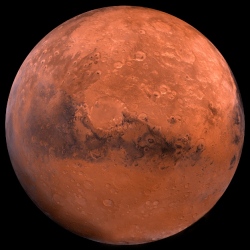
Nasa’s Curiosity rover has found that water can exist as a liquid near the Martian surface. The results lend credence to a theory that dark streaks seen on features such as crater walls could be formed by flowing water. Scientists think thin films of water form when salts in the soil, called perchlorates, absorb water vapour from the atmosphere.
The temperature of these liquid films is about -70C – too cold to support any of the microbial life forms that we know about. Forming in the top 15cm of the Martian soil, the brines would also be exposed to high levels of cosmic radiation – another challenge to life. But it’s still possible that organisms could exist somewhere beneath the surface on Mars, where conditions are more favourable.
The researchers drew together different lines of evidence from the suite of instruments carried by the Curiosity rover. The Rover Environmental Monitoring System (REMS) – essentially the vehicle’s weather station – measured the relative humidity and temperature at the rover’s landing site of Gale Crater.
Scientists were also able to estimate the subsurface water content using data from an instrument called Dynamic Albedo of Neutrons (DAN). These data were consistent with water in the soil being bound to perchlorates. Finally, the Sample Analysis at Mars (SAM) instrument gave the researchers the content of water vapour in the atmosphere.
